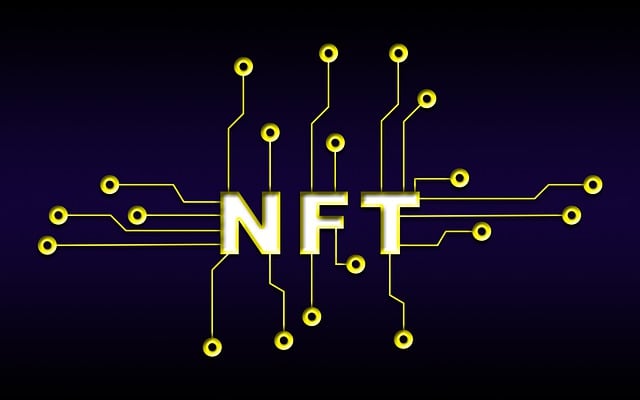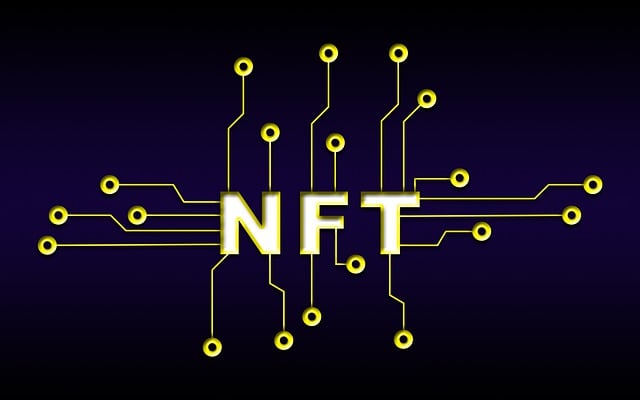Crypto Trading Bot AI: Smart Automation for Consistent Gains
Author: Jameson Richman Expert
Published On: 2025-10-27
Prepared by Jameson Richman and our team of experts with over a decade of experience in cryptocurrency and digital asset analysis. Learn more about us.
Crypto trading bot AI combines algorithmic automation and artificial intelligence to execute trades, manage risk, and optimize returns in the fast-moving cryptocurrency markets. This comprehensive guide explains how AI-powered crypto bots work, how to pick or build one, implement robust risk controls, and integrate with major exchanges. It also provides practical strategies, evaluation metrics, security best practices, and useful resources to help you deploy an effective system that fits your goals.

Why use a crypto trading bot AI?
Automated trading systems powered by AI offer several advantages over manual trading:
- Speed and execution: Bots can react in milliseconds to market changes and execute orders instantly, eliminating lag and human reaction time.
- Emotion-free trading: AI-driven rules prevent emotional decisions like panic-selling or greed-driven overtrading.
- 24/7 market coverage: Crypto markets run nonstop; a bot monitors markets and trades continuously.
- Scalability: Bots can manage multiple pairs and strategies simultaneously.
- Data-driven optimization: Machine learning allows systems to adapt and refine strategies from historical and live data.
Core components of an AI crypto trading bot
An effective crypto trading bot AI typically contains several modular components:
- Data ingestion: Order books, trades, historical OHLCV candles, on-chain metrics, social sentiment, and macro data.
- Feature engineering: Indicators (RSI, MACD, EMA), derived metrics (volatility, liquidity), and engineered features for ML models.
- Model or strategy engine: This can be rule-based, machine learning (supervised, unsupervised), or reinforcement learning (RL).
- Risk manager: Position sizing, stop loss, take profit, leverage controls, and max drawdown caps.
- Execution layer: API integration with exchanges, order routing, limit vs market order logic, and slippage handling.
- Backtesting and simulation: Robust historical simulation with realistic slippage, fees, and order book simulation.
- Monitoring and alerts: Real-time dashboards, performance metrics, and notifications for exceptions.
Types of AI approaches used in crypto bots
AI can be applied at different levels and complexity:
1. Rule-based systems (with AI enhancements)
Simple strategies like moving average crossovers are rule-based. AI can enhance such systems by automatically optimizing parameters (MA periods, thresholds) using techniques like grid search, Bayesian optimization, or genetic algorithms.
2. Supervised learning
Models such as random forests, gradient boosting, or neural networks predict price direction or probability of a move. Supervised models require labeled data (e.g., next-period returns) and careful feature design.
3. Unsupervised learning
Clustering and dimensionality reduction can identify regime changes, market microstructures, or unusual asset behavior to switch strategies dynamically.
4. Reinforcement learning (RL)
RL agents learn policies that maximize cumulative reward by interacting with an environment. RL is powerful for sequential decision-making (enter, exit, sizing), but requires massive simulation and robust reward shaping to avoid undesirable behaviors.
5. Hybrid approaches
Many production systems combine rule-based filters, supervised signals, and RL-based position sizing—for a balance of interpretability and adaptability.

How to choose a crypto trading bot AI
Choosing the right bot or platform depends on your resources, skill level, and risk tolerance. Consider:
- Strategy transparency: Does the bot show how decisions are made? Black-box models are harder to validate.
- Backtesting quality: Look for walk-forward testing, realistic slippage, and fee modeling.
- Exchange support and API reliability: Which exchanges are supported and how robust are their API rate limits?
- Security: How are API keys stored? Does the bot require withdrawal permissions? Always use read/trade keys only.
- Customization and extensibility: Can you tweak strategies, add features, or integrate your models?
- Community and support: Active communities, documentation, and support reduce operational risk.
If you need curated ideas and watchlists to pair with automated systems, check resources such as this advanced guide to BTC/USDT TradingView ideas for expert traders and this master watchlist article that help refine ideas before automation:
- Comprehensive Advanced Guide to BTC/USDT TradingView Ideas
- TradingView Stock Lists — Master Your Watchlists
Integration with exchanges: best practices
Most trading bots connect to exchanges via REST and WebSocket APIs. Follow these best practices:
- Use API keys with minimal permissions: Only grant trade and read permissions; never enable withdrawals for a trading bot.
- Respect rate limits: Implement exponential backoff and request throttling to avoid bans.
- Secure storage: Store keys in encrypted vaults or environment variables; use hardware security modules (HSM) for institutional deployments.
- Test on testnets: Use exchange sandbox/testnet environments before live trading to validate logic.
- Redundancy and failover: Run multiple instances or secondary monitors to detect stuck orders or network outages.
Popular exchanges that many traders integrate with include Binance, MEXC, Bitget, and Bybit. Here are links to open accounts if you’re selecting an exchange to connect with your bot:
Designing strategies for AI bots: examples and templates
Below are practical strategy templates you can build upon. Each includes objectives, required inputs, and implementation notes.
1. Mean-reversion scalper
Objective: Exploit short-term price deviations from a mean using small timeframe candles.
- Inputs: 1–5 minute candles, EMA(20), Bollinger Bands, trade volume.
- Signal: Buy when price crosses below lower Bollinger Band and volume spike occurs; sell when price reverts above EMA(20) or hits profit target.
- Risk: Tight stop loss, small position sizes, high frequency.
- AI enhancement: Use a simple classifier to filter low-probability trades (reduce false positives).
2. Trend-following breakout
Objective: Ride momentum on multi-hour breakouts with trend confirmations.
- Inputs: 1h/4h candles, ATR-based volatility, volume, relative strength across asset universe.
- Signal: Enter on breakout above consolidation range with volume > X and ATR increasing.
- Risk: Use trailing stop based on ATR to protect gains.
- AI enhancement: Supervised model ranks breakouts by likelihood of continuation using historical breakout outcomes.
3. Market-making / arbitrage
Objective: Provide liquidity and capture spread in liquid pairs, or exploit cross-exchange price differences.
- Inputs: Live order book depth, spread, fees, funding rates.
- Signal: Place symmetric limit orders around mid-price; dynamically adjust size and spread per volatility.
- Risk: Inventory imbalance, adverse selection in high volatility.
- AI enhancement: Reinforcement learning can adapt quoting strategy to minimize inventory risk and maximize profitability.

Backtesting and validation: avoiding common pitfalls
Well-designed backtests are critical to avoid over-optimistic performance estimates. Use these practices:
- Out-of-sample testing: Split data into train/validation/test and perform walk-forward analysis.
- Realistic market simulation: Include slippage, exchange fees, order book impact, and latency.
- Survivorship bias: Ensure dataset includes delisted tokens and historical instruments to avoid biased returns.
- Transaction costs: Model maker/taker fees, funding rates for perpetual swaps, and borrowing costs for leveraged positions.
- Multiple market conditions: Test across bull, bear, and sideways markets; a robust bot should perform acceptably across regimes.
- Avoid data snooping: Limit hyperparameter tuning, and use proper statistical tests to confirm performance isn’t luck.
For learning and strategy inspiration, foundational resources like books or structured guides help. Consider deepening short-term strategy knowledge via dedicated guides such as this ultimate day trading strategies guide that covers consistent, profitable short-term trading tactics:
Performance metrics you must track
Key metrics give a complete picture beyond simple returns:
- Sharpe ratio: Risk-adjusted return; useful for comparing strategies with different volatilities.
- Sortino ratio: Focuses on downside deviation rather than total volatility.
- Max drawdown: Worst cumulative loss from a peak — essential for capital preservation.
- Win rate and payoff ratio: Frequency of wins vs. avg win/loss size.
- Profit factor: Gross profits divided by gross losses.
- Alpha vs benchmark: Excess return compared with a passive benchmark (e.g., BTC/USD).
- Execution metrics: Slippage, fill rate, average latency.
Security and operational best practices
Protecting funds and infrastructure should be non-negotiable:
- API key management: Store keys encrypted; avoid storing them in the source code repository.
- Use minimal permissions: Never enable withdrawal privileges for bot keys.
- Two-factor authentication: Always enable 2FA on exchange accounts and any control panels.
- Network security: Use VPNs for admin access, limit IPs for API access when supported, and monitor for suspicious activity.
- Logging and monitoring: Maintain immutable logs of trades, orders, and decisions for post-mortem analysis.
- Disaster recovery: Have a plan for network outages, hardware failures, or exchange halts, including emergency stop-loss and kill-switches.

Regulatory and tax considerations
Automated strategies don’t eliminate legal or tax obligations. Consider the following:
- Regulatory compliance: Rules vary by jurisdiction—market making or margin trading may require licensing in some regions. Refer to local financial regulators for rules; for U.S. investors, see the SEC or CFTC guidelines where applicable.
- Tax reporting: High-frequency trades generate many taxable events. Maintain detailed trade records and consult a tax professional familiar with cryptocurrency taxation.
- Data privacy: Comply with data protection regulations like GDPR if storing user data or operating a service.
For general background on algorithmic trading and AI, reputable references include the Algorithmic trading page on Wikipedia and resources on machine learning fundamentals:
Common pitfalls and how to avoid them
Even sophisticated AI bots can fail if common mistakes are made. Here are pitfalls and mitigations:
- Overfitting: Risk: Model learns noise. Mitigation: Use cross-validation, simpler models, and conservative parameter tuning.
- Poor execution assumptions: Risk: Unrealistic fills. Mitigation: Model order book and include slippage & latency in backtests.
- Ignoring fees: Risk: Erodes profit margins. Mitigation: Simulate exact maker/taker fees and funding costs.
- Chasing performance: Risk: Constantly switching strategies based on latest returns. Mitigation: Use statistically significant evaluation windows, and keep a strategy playbook.
- Insufficient capital for drawdowns: Risk: Margin calls or forced liquidation. Mitigation: Conservative leverage and position sizing rules tied to volatility.
Operational checklist before going live
Follow this pre-launch checklist to reduce surprises:
- Backtest across multiple market scenarios and perform walk-forward validation.
- Paper trade or run on a sandbox/testnet for a period covering different market regimes.
- Stress test your execution under simulated latency and partial fills.
- Implement monitoring dashboards and automated alerts for exceptions.
- Limit initial capital exposure with conservative position sizing rules.
- Ensure encrypted API key storage and enable 2FA on all accounts.
- Document emergency stop procedures and ensure multiple people know the protocol if you operate with a team.

Scaling and continuous improvement
Once your bot demonstrates consistent, risk-adjusted performance, consider scaling with caution:
- Gradual capital increases: Scale in based on hitting performance milestones.
- Diversification: Add new markets, non-correlated assets, or complementary strategies to spread risk.
- Model retraining cadence: Retrain supervised models periodically to incorporate fresh market dynamics; use model monitoring for concept drift.
- Automation of research to production: Build pipelines for data ingestion, model training, backtesting, and deployment to shorten the research loop.
When to consider building your own vs buying a solution
Building a bot is rewarding but resource-intensive. Ask yourself:
- Do you have software engineering and quantitative skills?
- Do you need full customization or proprietary signals?
- Do you prioritize speed, latency, or regulatory controls unavailable in off-the-shelf products?
If not, consider reputable commercial platforms or white-label solutions with transparent performance records. If you want to combine curated market ideas with automated execution, pairing strategy sources and watchlists with your automation is useful. The TradingView watchlists and advanced BTC/USDT idea guides referenced earlier can help shape robust strategies before automating them.
Real-world example: Building a supervised signal for trend continuation
Here’s a simplified blueprint for a supervised signal project you can prototype in stages:
- Data collection: Collect 1h candles, volume, BTC dominance, funding rates, and sentiment features for the past 3 years.
- Labeling: Define label: +1 if next 24h return > 0.8% (target), -1 if < -0.8%, else 0.
- Feature engineering: Compute ATR, EMA slopes, RSI, skewness of returns, and normalized volume spikes.
- Modeling: Train a gradient boosting model (e.g., XGBoost) to predict probabilities of +1/-1/0. Use class weighting to handle imbalance.
- Backtest: Implement a strategy: Enter when prob(+1) > 0.6 and prob(-1) < 0.2, position size = Kelly or fixed fraction, stop loss at 1.5*ATR.
- Validate: Walk-forward test across multiple time windows. Simulate slippage & fees.
- Paper trade: Run in paper/live mode for 3 months and monitor execution metrics and live drawdown.

Ethics, transparency, and community trust
If you operate a bot service or sell signals, prioritize transparency and ethical practices:
- Publish verifiable performance reports (preferably exchange or broker-verified).
- Disclose strategy risks and historical drawdowns.
- Avoid unreasonable promises of guaranteed returns.
Further learning and credible resources
Wide-ranging knowledge across finance, data science, and engineering is needed to build robust AI trading bots. High-authority resources include:
- Machine learning — Wikipedia
- Backtesting basics — Investopedia
- University courses (e.g., Stanford, MIT OpenCourseWare) on machine learning and algorithms.
Final checklist: launching a responsible crypto trading bot AI
- Have a documented strategy thesis and objective metrics for success.
- Complete robust backtesting with walk-forward validation and realistic costs.
- Use secure API practices and limit permissions (no withdrawals).
- Start small and scale only after consistent live performance.
- Monitor and retrain models to manage model drift and changing market regimes.
- Keep a contingency plan for exchange outages and extreme market events.
By following these guidelines, selecting solid exchanges to integrate with, and using high-quality strategy ideas and watchlists as input, you can deploy a crypto trading bot AI that is both effective and resilient. For curated strategy ideas, watchlists, and short-term trading methodologies to feed into your bot, check the advanced guides and watchlist resources linked above.
Ready to start? Choose an exchange, secure your API keys, run rigorous backtests, and iterate cautiously. If you plan to sign up on an exchange to test your bot, consider these platforms:
For ongoing education and curated signal ideas, revisit the TradingView guides and day trading materials previously linked. Combining disciplined strategy design, strong risk controls, secure operations, and continuous evaluation will give your crypto trading bot AI the best chance at long-term success.